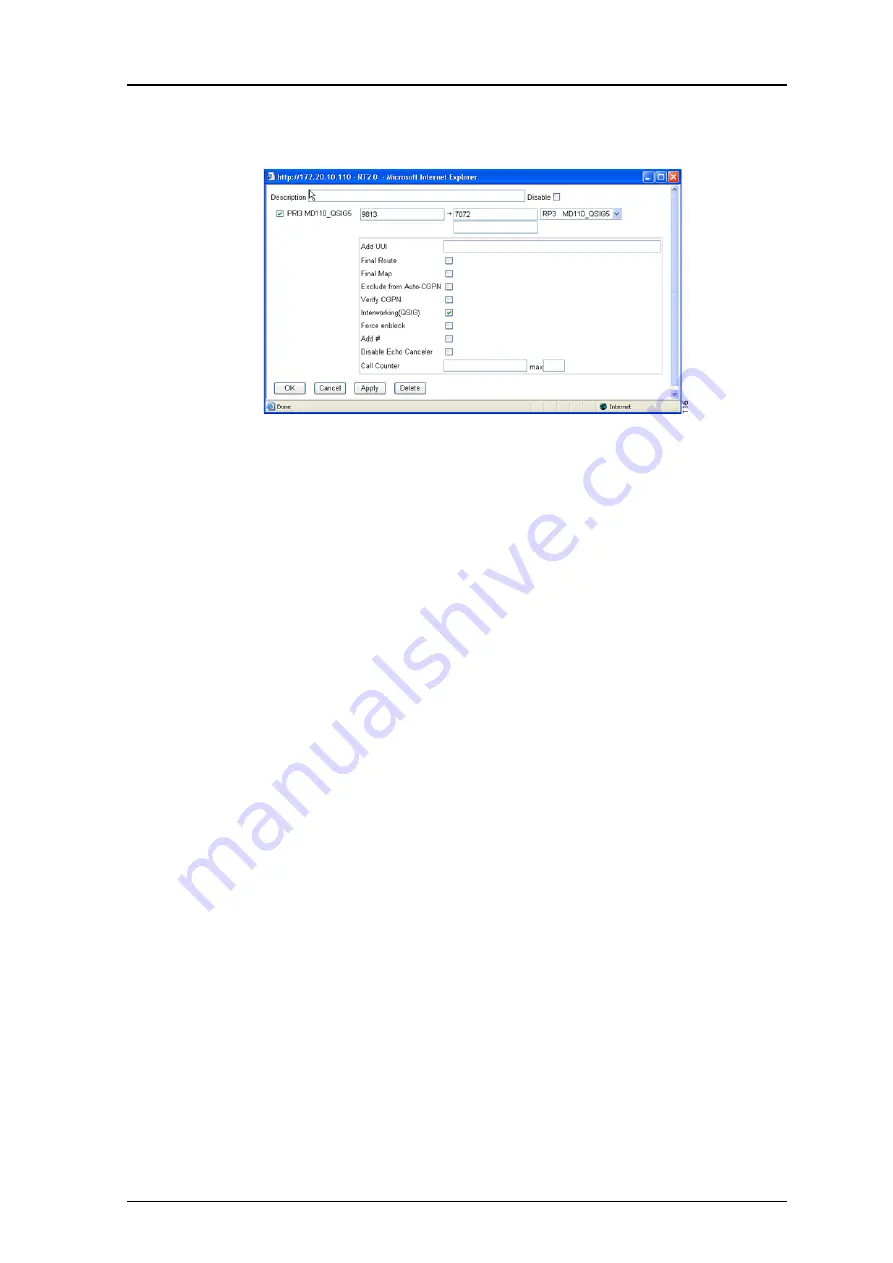
TD 92326GB
2009-03-10 / Ver. E
Installation and Operation Manual
VoIP Gateway
146
then, the current call will be switched to the interface specified in the destination field in
the route of the Map or in the destination field of the Map.
Figure 128. Map
In the process, the called number is modified in such a way that the dial prefix in the
“Number in” field is replaced by the sequence of digits in the “Number out” field. The
calling number is modified accordingly using the “Number in” and “Number out” fields if
the map entry used has a “CGPN map” entry whose “Number in” field matches the dial
prefix of the calling number of the current call.
If it is not possible to switch the call to the identified interface however, the routing table is
searched for the next Map entry that meets the requirements specified above.
21.3 Manipulation of a Calling Number (CLI)
When switching calls it may be necessary to manipulate the calling number, for example
to ensure a correct callback.
To ensure that an exchange access digit of 0 is placed in front of the calling number for all
incoming calls via the exchange line, a “CGPN (calling party number) map” must be
created for the respective interface.
The basic procedure for this is described in section
An additional 0 can be added as exchange access code on the PRI interface.
21.4 Automatic Correction of all Calling Numbers
With complex routing tables, manual correction as described above can be very laborious
and error prone. It is possible to automatically have all calling numbers correctly set. To do
this, you only have to select the “Automatic CGPN mapping” check box in the Gateway >
General area.
The modifications to the calling numbers are produced by analysing the routing table.
Here a route is searched for that would enable callback to the current call. The number
replacements for this route would then be used in reverse order. This automatic correction
Tip:
If no suitable Map entry is found in the routing table, the call is invalid and is not
put through. In this way you can prevent, for example, an exchange line being
accessed from certain sources, resulting in costs.















































